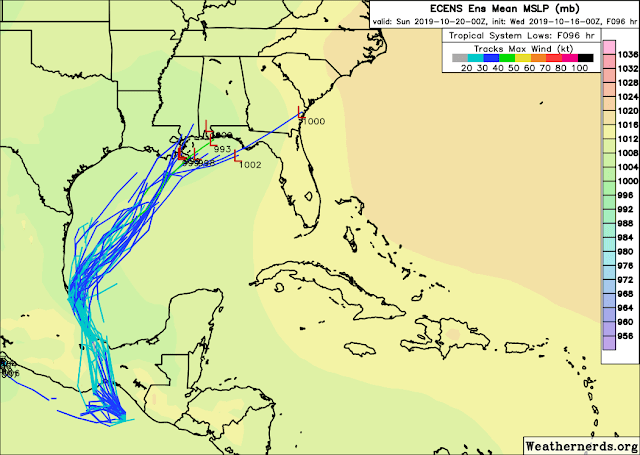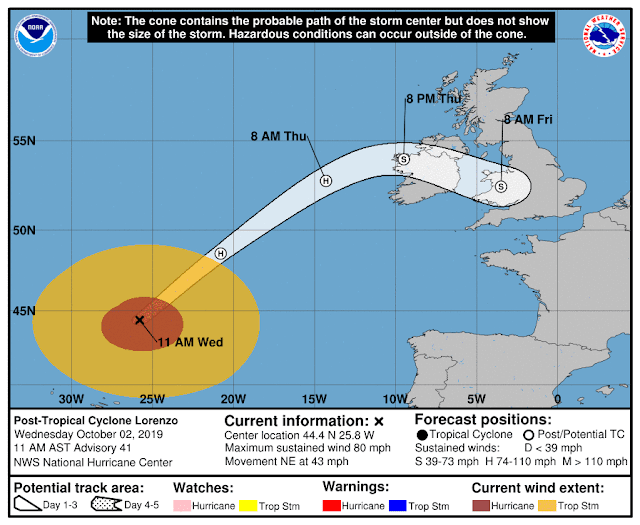As anticipated, it is looking less tropical and more subtropical with time, which doesn't really change the impacts, just the formal classification if it ever gets that far. The center is still expected to reach the coastline near Panama City early Saturday morning with tropical storm force winds. This is the same area where Category 5 Hurricane Michael made landfall last October and the long road to recovery has just begun.
Looking at the winds, the map below shows the probability of an area experiencing tropical storm strength winds over the coming three days along with the most likely arrival time of those winds. Note that the whole southeast U.S. coast from central Florida up to North Carolina should be preparing for some potentially damaging winds (mostly damaging to trees).
Perhaps the biggest hazard posed by this will be storm surge, and just because of where it's headed. The Big Bend area of Florida is shaped perfectly to allow winds to bulldoze water onshore. The rainfall could be locally problematic, but overall, the storm's relatively quick forward speed will limit the amount of rain that will fall. As of Friday morning, it's moving toward the northeast at 22mph and that is expected to increase with time. And to round out the big 4 hazards, there is an elevated tornado threat to the right of the forecast track. The NWS Hurricane Threats & Impacts (HTI) graphics as of Friday morning are shown below:
https://twitter.com/BMcNoldy/status/1184879258071494657
- Visit the Tropical Atlantic Headquarters.
- Subscribe to get these updates emailed to you.
- Follow me on Twitter
 Rainfall from Potential Tropical Cyclone 16 is reaching Louisiana over to the northern Florida peninsula as of Friday morning. This will continue and become more widespread, and storm surge will also begin to increase for places to the right of the storm's track (with onshore wind). Although it narrowly lacks the organization to be classified as a tropical or subtropical cyclone and earn a name, it now has peak sustained winds of 60 mph. If it does get named, it would be Nestor.
Rainfall from Potential Tropical Cyclone 16 is reaching Louisiana over to the northern Florida peninsula as of Friday morning. This will continue and become more widespread, and storm surge will also begin to increase for places to the right of the storm's track (with onshore wind). Although it narrowly lacks the organization to be classified as a tropical or subtropical cyclone and earn a name, it now has peak sustained winds of 60 mph. If it does get named, it would be Nestor.




 The disturbance that has been a feature of interest for one full week now is finally taking shape in the western Gulf of Mexico. Although it is not forecast to become very strong, it will bring the threats of flooding rain and storm surge to areas from Louisiana to the northern Florida peninsula in the coming days.
The disturbance that has been a feature of interest for one full week now is finally taking shape in the western Gulf of Mexico. Although it is not forecast to become very strong, it will bring the threats of flooding rain and storm surge to areas from Louisiana to the northern Florida peninsula in the coming days.




















